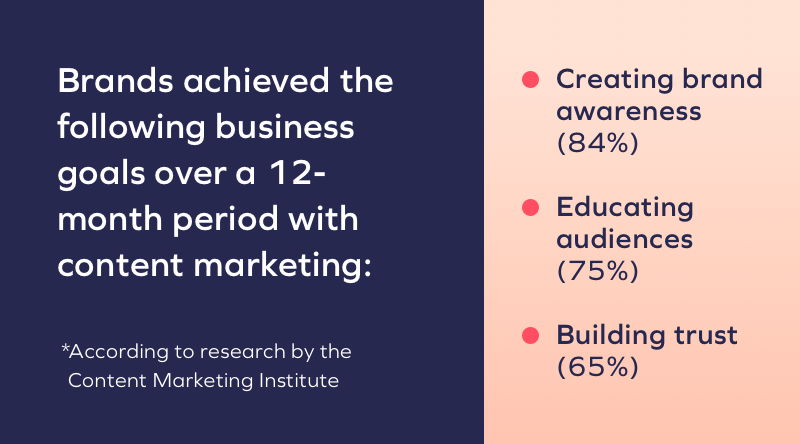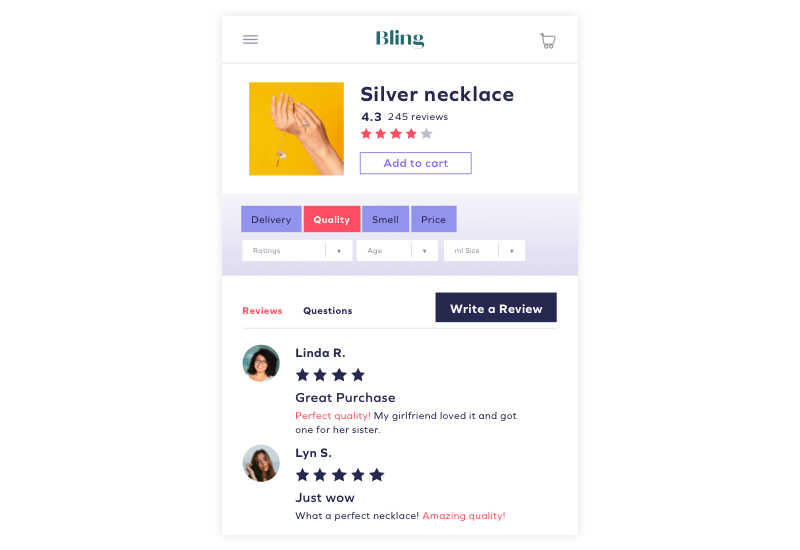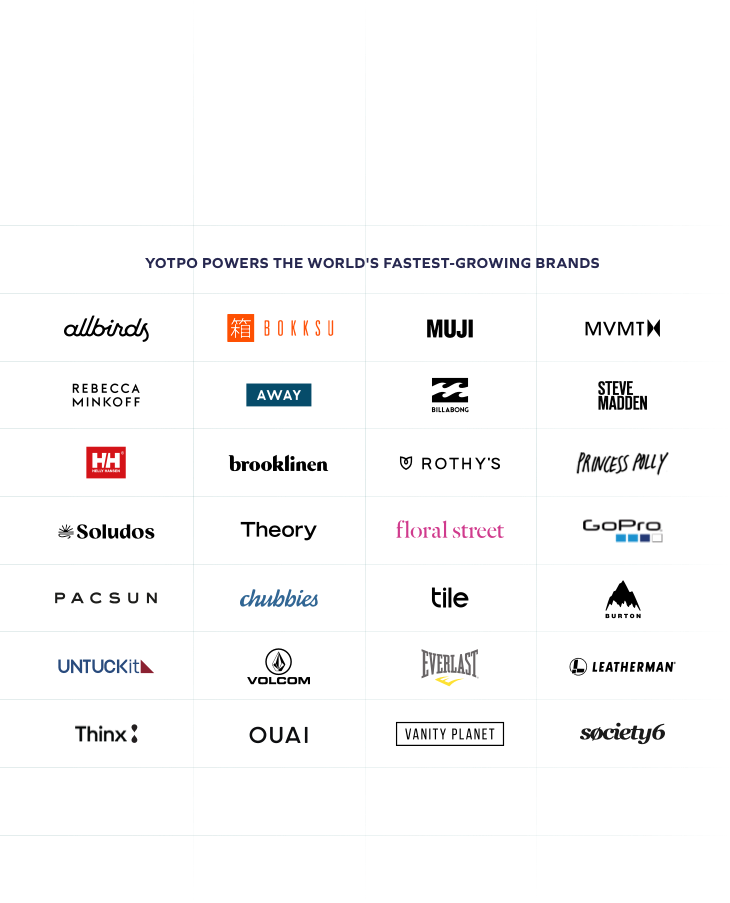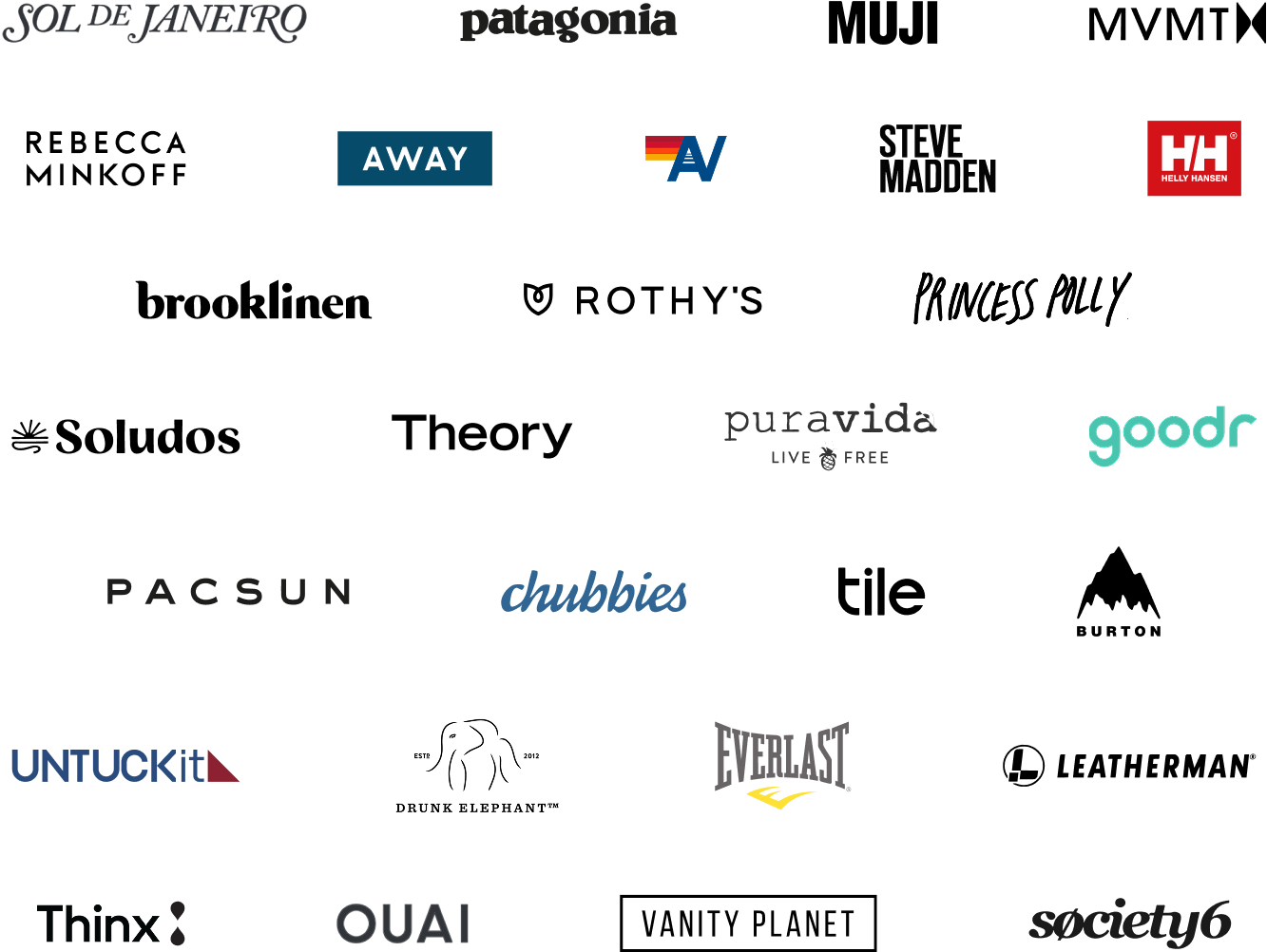Content Marketing for eCommerce Brands
Many eCommerce brands overlook a vital part of SEO: content marketing.
 eCommerce SEO Guide
eCommerce SEO Guide
Many eCommerce brands overlook a vital part of SEO: content marketing.
Content is what creates brand and product awareness, bringing people to your store. If done right, you can turn that initial interest into a sale.
According to research by the Content Marketing Institute (CMI), brands achieved the following business goals over a 12-month period with content marketing:

CMI defines content marketing as “a strategic marketing approach focused on creating and distributing valuable, relevant, and consistent content to attract and retain a clearly-defined audience — and, ultimately, to drive profitable customer action.”
Many brands assume that content marketing means writing and publishing blog posts on your site. While that can certainly be part of an overall content marketing strategy, content comes in many forms. Podcasts are content. Social media posts are content. Product reviews are content. Content marketing can happen both on your owned channels and off.
What many brands don’t realize is that content marketing isn’t about promoting your products — it’s about providing value to users, and positioning your brand as a trusted expert in your space. It’s only after you’ve established that connection with a shopper that you start marketing products to them. Otherwise, your content will read like an ad and it will just become noise in your customer’s journey.
eCommerce brands can use content at each stage of the marketing funnel to drive awareness, consideration, and ultimately, conversion. Let’s dive into the different stages and explore the best types of content for each.
The awareness stage is the top of the funnel — it’s where you are basically saying, “Hey! I exist! Come check me out!” to a large target audience. Because these shoppers don’t yet know you, that content needs to exist out in the digital world where they can come across it.
Here are some effective types of content for the awareness stage:
This type of content is particularly important for SEO, as it provides you with all-important backlinks.
Tip: Not every channel will be effective for every eCommerce brand. First, you need to do some research into where your audience is spending time online. You don’t want to pour all of your resources into Instagram videos if your target audience is mostly on TikTok.
Once you’ve got your target audience to your website, you want to convince them to stick around for a bit. That’s the consideration stage, or the middle of the funnel. Interactive, visual, and educational content are all important at this stage.
Here are some types to consider:
Tip: Make sure that you’re focusing on the value you’re providing at this stage. Products should be visible, but secondary.
Once you’ve gotten your shoppers interested and engaged, it’s time to move in for the conversion. This is the step that will make or break your sale.
Here are the best types of content for this stage:

Tip: Don’t be afraid to pack a lot of information onto your product pages. The more content, the better for SEO. Just make sure the Buy button is near the top.
Hopefully, you have a good idea of which channels and content types will work for your business at this point, but how do you find the right topics? That’s where research comes in. Here are some questions to ask yourself:
Content marketing requires some up-front investment, but it can pay off for a long time in the future, especially if you’re creating evergreen content. And once you have a few pieces of content that are successful, you can use them as a jumping-off point to other topics and content types.
“Yotpo is a fundamental part of our recommended tech stack.”
 Laura Doonin, Commercial Director
Laura Doonin, Commercial Director








